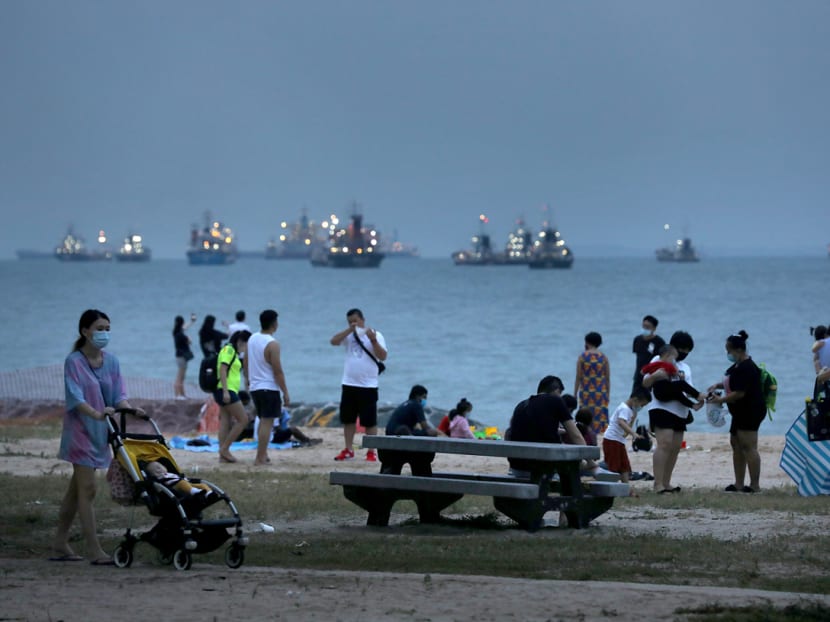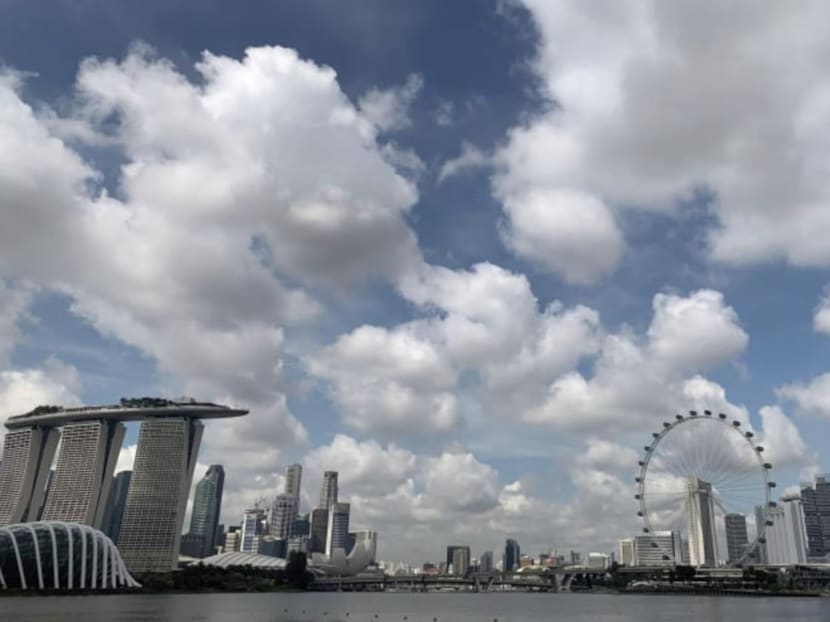Moving towards a climate-resilient Singapore
In a recent interview with Urban Solutions magazine, Senior Minister Teo Chee Hean outlined the challenges Singapore faces in tackling climate change, the Government’s mitigation and adaptation strategies as well as plans to help businesses, among other things. Below is an edited excerpt of the interview.
In a recent interview with Urban Solutions magazine, Senior Minister Teo Chee Hean outlined the challenges Singapore faces in tackling climate change, the Government’s mitigation and adaptation strategies as well as plans to help businesses, among other things. Below is an edited excerpt of the interview in the July 2020 issue of the magazine published by the Ministry of National Development’s Centre for Liveable Cities with Mr Teo, who is also Coordinating Minister for National Security and Chairman of the Inter-Ministerial Committee on Climate Change (IMCCC).
What are the climate disruptions that Singapore faces and how are we preparing to address them?
Small island nations like Singapore face an asymmetrical challenge. On one hand, our impact on global emissions is small. But on the other hand, the effect of climate change on us is disproportionately large and existential.
Being a low-lying island, Singapore is particularly vulnerable to rising sea levels. Climate change will result in more frequent episodes of extreme weather, and disrupt our access to essential food, water and energy sources.
If Covid-19 was a black swan event that changed the way we live within a short period of time, then climate change is a “slow boil” challenge that will disrupt our lives even more in the longer term.
This is why our climate policy is being coordinated as a whole-of-nation issue under the Prime Minister’s Office.
The IMCCC formulates and monitors our national plans to reduce emissions and adapt to the consequences of climate change.
What are the key policy goals and what major changes must we make?
In 2015, we set the target of our Nationally Determined Contribution (NDC) to the Paris Agreement to reduce our emissions intensity — or greenhouse gas emissions per dollar of GDP — in 2030 by 36 per cent from 2005 levels, and for our total emissions to peak around 2030.
We are on track to meet this commitment. Earlier this year, we enhanced our NDC by committing to an absolute peak emission level of 65 million tonnes of carbon dioxide equivalent around 2030.
We also announced our Long-Term Low-Emissions Development Strategy (LEDS), which is to halve our emissions from our peak to 33 million tonnes of carbon dioxide equivalent by 2050 and achieve net zero emissions in the second half of this century.
Our mitigation strategy has three main thrusts. First, we need transformations in our industry, economy and society.
Every sector will need to make a significant effort to limit emissions for Singapore to move towards becoming a low-carbon nation, with new enterprises and new growth areas such as the digital economy.
Second, we must draw on nascent technologies such as carbon capture, utilisation and storage; and low-carbon fuels.
Third, we need international collaboration in areas like carbon markets and regional electricity grids.
Apart from these mitigation measures, we must also plan seriously for the real prospect that sea levels will rise by up to 1m by 2100, in line with what climate science is telling us. We need to implement adaptation plans and protect our coastlines, in order to keep our country and people safe.
Could you tell us more about what is being done to protect Singapore’s coastline?
This is a large-scale and long-term effort that will require considerable resources.
In his 2019 National Day Rally, Prime Minister Lee Hsien Loong estimated that this will cost S$100 billion or more over the next 50 to 100 years.
Deputy Prime Minister Heng Swee Keat announced in this year’s Budget a new Coastal and Flood Protection Fund, to set aside resources to provide for the substantial capital outlay and to implement coastal and flood protection measures in a fiscally sustainable manner.
In 2011, we raised the platform level for all new land reclamation projects by an additional 1m, from 3m to 4m above Singapore Height Datum (commonly referred to as SHD and is the mean sea level at Victoria Dock between 1935-1937).
This gives us a 2m buffer above the highest tide ever recorded in Singapore.
For key new facilities such as Changi Airport T5, we are raising the platform level even higher, to at least 5m above SHD.
The Marina Barrage dam provides some flood protection, but we are looking to raise that further and even increase the size of the pumps.
We are studying adaptation options for hydraulically distinct coastal areas and will develop these studies into detailed plans that will be implemented in phases.
Singapore prides itself on being a clean and green garden city. How is focusing on environmental sustainability important for tackling climate challenges?
We have always believed in putting environmental and resource sustainability at the centre of everything we do.
This means pricing resources like water and energy, and waste disposal properly so that consumers and businesses take into account their real costs and avoid excessive consumption.
We were a global pioneer in imposing congestion pricing and limits on the growth of the vehicle population.
These innovations help us to better manage traffic and internalise for road users the congestion and other costs that are imposed on the city. Similarly, we have introduced an economy-wide carbon tax, which is applied across the board with no exemptions, to encourage responsible use.
The Singapore Government believes in adopting a realistic and practical approach towards climate change — you could call us “climate realists”.
We will continue to encourage constructive discussions, based on facts and the best available science and technology, and considering the larger context of the range of challenges we face in our national policy framework.

Visitors to East Coast Park on July 26, 2020. Mr Teo says protecting Singapore's coastlines against rising sea levels is a large-scale and long-term effort that will require considerable resources. Photo: Nuria Ling/TODAY
How important is it for different segments of society to come together in the fight against climate change?
We need all Singaporeans — the Government, individuals, households and businesses — to work together in a whole-of-nation effort.
One example is our effort to reduce waste. Singapore’s only landfill in Pulau Semakau is projected to run out of space by 2035.
We must manage our waste better, invest in science and technology to create new products from waste, and adopt more sustainable lifestyles.
The “take-make-dispose” or linear economy model of production and consumption is not sustainable.
Besides the 3Rs of reduce, reuse and recycle, society must shift mindsets to viewing waste as a resource that can be reintroduced into the production cycle.
Shifting towards a circular economy can keep our precious resources in use for as long as possible.
We also encourage all households to take simple and practical steps to save energy, such as by choosing energy efficient appliances, turning off electrical appliances when not in use, or taking public transport instead of driving. These small steps by individuals go a long way collectively and can cut down on household expenditure.
Are there particular challenges that a small, high-density city like Singapore faces?
Our limited land area, lack of natural resources and geography pose challenges for large-scale deployment of renewable energy or nuclear energy.
We do not have great rivers for hydropower, nor do we have much geothermal potential. Our low and variable wind speeds and lack of land and sea space limit our potential to install wind turbines.
We have also assessed that the current generation of nuclear power plants are not suitable for deployment in Singapore.
Solar energy is thus far the most promising renewable energy source for Singapore. We are significantly accelerating the deployment of solar energy.
In April 2020, the Energy Market Authority announced that we had achieved our 2020 solar deployment target of 350 megawatt-peak.
We are now pressing ahead with our plans to reach our more ambitious solar target of at least 2 gigawatt-peak by 2030. Even then, solar power will only meet around 4 per cent of our current annual electricity needs.
To decarbonise our grid, we still need our other three energy “switches”: Natural gas, regional power grids and low-carbon alternatives.
Beyond domestic efforts, how is Singapore working with partners globally to mitigate and adapt to climate disruptions?
We work actively in international forums to strengthen consensus among countries. Singapore is often called upon as a trusted interlocutor to forge solutions at international climate negotiations.
For example, then Minister for the Environment and Water Resources Masagos Zulkifli co-facilitated the topic of mitigation at the United Nations Climate Change Conference in Katowice in 2018, and the key outcomes of the climate negotiations in Madrid last December.
Our decision to make an early submission of our enhanced NDC and LEDS to the UN Framework Convention on Climate Change (UNFCCC) in March 2020 further reflects our commitment to multilateralism and global action.
In the maritime and aviation arena, we work closely with international bodies to facilitate the greater adoption of sustainable aviation fuels and high-quality marine fuels with lower sulphur content.
Singapore also collaborates with international partners such as the UNFCCC and the Association of Southeast Asian Nations to build capabilities and share experiences.
Since 1992, we have trained more than 130,000 officials from developing countries under the Singapore Cooperation Programme, in areas such as sustainable development, urban planning, and water and transport management.
Are there trade-offs between pursuing economic growth and environmental sustainability?
We have always believed that economic growth can be compatible and mutually reinforcing with environmental objectives.
The industrial sector contributes the largest share of emissions at 60 per cent. We are working closely with industries to make the necessary adjustments, and capture new business opportunities and build their competitive advantage in the transition to a low-carbon economy.
For example, the petrochemical industry is a vital sector, not just for Singapore, but also for the world. Besides fuel, the industry supplies many other products that are needed for our daily lives.
The sector also provides high-paying jobs with good career progression for Singaporeans and creates significant spin-offs to the rest of the economy in areas such as logistics and oil trading.
The Government works closely with businesses so that our petrochemical plants are among the best-in-class globally in energy and carbon efficiency. We want to be at the forefront of the global move towards environmentally sustainable production and seize the new opportunities this creates.
What are some initiatives to foster this transformation to a low-carbon future?
Singapore has developed a suite of supporting services and facilities to serve as a living laboratory to develop, test and validate clean-energy technologies in real-world settings.
For example, CleanTech Park, Singapore’s first eco-business park, provides a platform for clean technology companies to come together, cross-fertilise ideas and prototype sustainable urban solutions. The intent is to create 20,000 green-collar jobs when it is completed by 2030.
Another example is the Renewable Energy Integration Demonstrator-Singapore, or Reids, operated by the Energy Research Institute at Nanyang Technological University. Reids has a microgrid on Semakau Landfill, and companies can test the integration of renewable energy from solar, wind, tidal, biofuel and fuel cells with smart grid technologies in tropical conditions.
We are also working with industries and the research community to study new technologies such as carbon capture and low-carbon hydrogen.
We are investing nearly S$1 billion in new urban mobility solutions and a next-generation energy grid. Developing new knowledge and solutions in water, energy, land management and food resilience can offer new economic opportunities. By tapping such opportunities, our companies can turn Singapore into a green growth hub to provide innovative and sustainable solutions.
In many ways, this is also the story of Singapore. We have turned constraints into opportunities and limitations into success. This is what we intend to do with climate change and sustainable growth.







